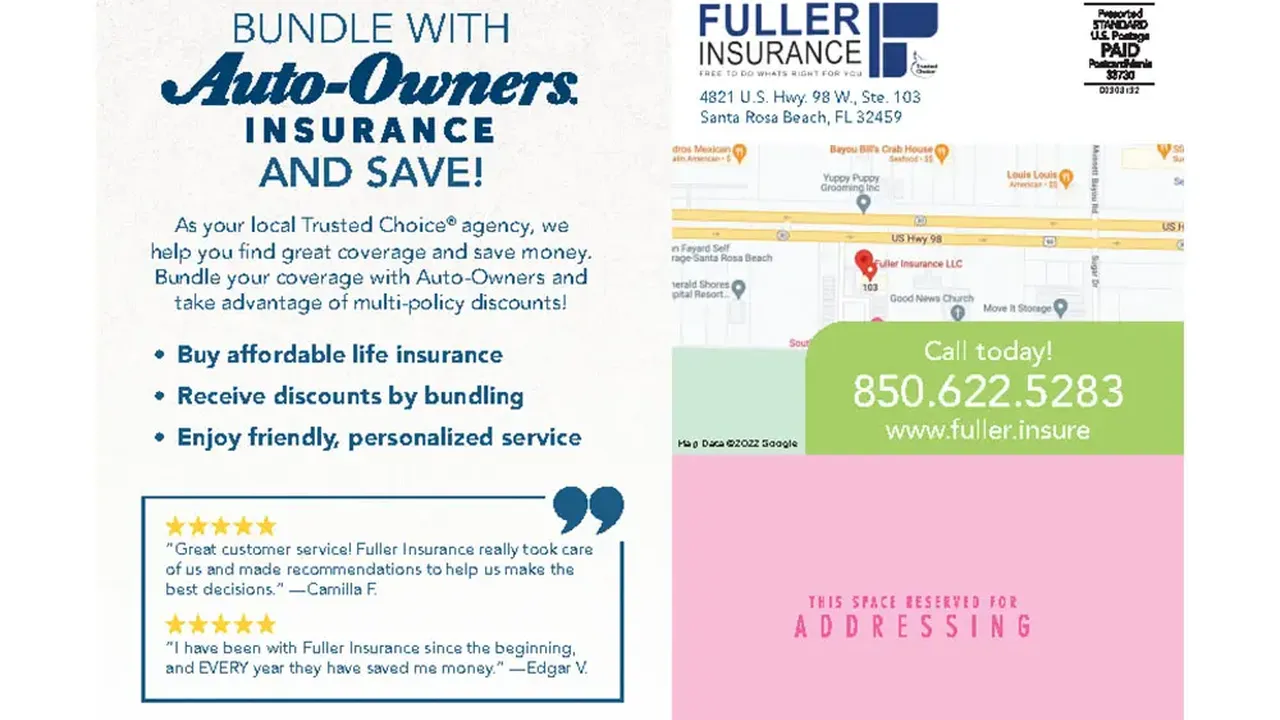Comparing Simplified Issue Life Insurance Policies
Review simplified issue life insurance policies for faster approval with fewer medical questions.

Comparing Simplified Issue Life Insurance Policies
What is Simplified Issue Life Insurance and Why Consider It
Hey there! Let's talk about something super practical: simplified issue life insurance. You know, sometimes getting life insurance can feel like a trip to the doctor for a full physical, complete with blood tests and a bunch of questions about your great-aunt's medical history. It can be a bit much, especially if you're busy or just not a fan of needles. That's where simplified issue comes in. It's designed to be, well, simpler! Instead of a full medical exam, you'll typically answer a few health questions on the application. The insurer then uses these answers, along with other public records like prescription drug databases or the MIB (Medical Information Bureau), to assess your risk. The big draw here is speed and convenience. If you need coverage quickly, or if you have some minor health issues that might make traditional underwriting a hassle, simplified issue could be a fantastic option.
So, why would someone choose this route? Maybe you've just had a baby and realized you need coverage ASAP. Or perhaps you've been putting off getting life insurance because the thought of a medical exam is daunting. Maybe you have a pre-existing condition that isn't severe enough to disqualify you from simplified issue, but might complicate a fully underwritten policy. It's all about making life insurance more accessible and less of a headache. While it might not offer the absolute lowest premiums for perfectly healthy individuals, the trade-off in ease and speed can be well worth it for many.
Key Features and Benefits of Simplified Issue Life Insurance
Alright, let's dive into what makes simplified issue tick. The main thing, as we've touched on, is the streamlined application process. You're looking at fewer health questions, no medical exam, and often quicker approval times. We're talking days, not weeks or months, in many cases. This is a huge plus if you have an immediate need for coverage, like securing a loan or protecting a new family. Another cool thing is that it can be more forgiving for those with certain health conditions. While it's not guaranteed issue (meaning they still assess some risk), it's definitely less stringent than traditional underwriting.
What kind of benefits are we talking about? Well, simplified issue policies typically offer a death benefit, just like any other life insurance. This money goes to your beneficiaries when you pass away, helping them cover expenses like funeral costs, outstanding debts, or even just maintaining their lifestyle. Some policies might also build cash value, especially if they're a form of permanent simplified issue, though this is less common than with fully underwritten whole or universal life policies. The peace of mind that comes with knowing your loved ones are protected, without having to jump through a million hoops, is a massive benefit in itself.
Comparing Top Simplified Issue Life Insurance Providers and Products
Now, let's get to the nitty-gritty: who's offering what? It's important to remember that the 'best' policy really depends on your individual situation, but here are a few popular providers and types of simplified issue products you might encounter. Keep in mind that specific product names and features can change, so always check with the insurer directly.
Mutual of Omaha Simplified Issue Whole Life Insurance
Mutual of Omaha is a big name in the insurance world, and they offer a solid simplified issue whole life product. This is great for folks looking for permanent coverage without a medical exam. It's often marketed towards seniors or those who want to cover final expenses. The application usually involves answering a few health questions, and approval can be quite fast. The death benefit is typically smaller, often ranging from $2,000 to $40,000 or $50,000, making it ideal for covering funeral costs, medical bills, or other end-of-life expenses. The premiums are usually fixed for life, and the policy builds cash value over time. For example, a 65-year-old non-smoking male might pay around $50-$70 per month for a $10,000 policy, but this is a very rough estimate and varies greatly by age, gender, and specific health answers.
Gerber Life Grow-Up Plan Simplified Issue Whole Life for Children
While not for adults, the Gerber Life Grow-Up Plan is a classic example of simplified issue for children. It's a whole life policy that starts small, often with a $5,000 or $10,000 death benefit, and automatically doubles at age 18 or 21 (depending on the policy) without an increase in premium. The application is super simple, usually just asking if the child is healthy. No medical exam for the child, obviously! It builds cash value, and the child can take over the policy as an adult. This is a popular choice for parents or grandparents who want to lock in insurability for a child early on. Premiums are very affordable, often starting around $5-$15 a month for a young child, depending on the initial coverage amount.
Foresters Financial PlanRight Simplified Issue Whole Life
Foresters Financial also offers a range of simplified issue whole life products under their PlanRight series. They have different tiers based on health, which can sometimes lead to better rates if your health isn't perfect but isn't severely impaired. Like other simplified issue whole life policies, it offers permanent coverage, fixed premiums, and builds cash value. They often have a graded death benefit for the first few years, meaning if you pass away from natural causes within that period, your beneficiaries might only receive a return of premiums plus interest, rather than the full death benefit. This is a common feature in simplified issue policies to mitigate risk for the insurer. For someone in their 50s or 60s, a $25,000 policy might range from $70-$120 per month, again, highly dependent on individual factors.
AIG Guaranteed Issue Whole Life Insurance (Often Simplified in Practice)
While technically 'guaranteed issue' (meaning no health questions at all), many people lump these in with simplified issue because of the ease of application. AIG offers a guaranteed issue whole life policy that's available to individuals typically aged 50-80. There are no medical questions and no medical exam. The catch? It almost always comes with a graded death benefit for the first two years. This means if you die from natural causes within the first two years, your beneficiaries usually receive all premiums paid plus a small amount of interest (e.g., 10%). After two years, the full death benefit is paid. This is a last-resort option for those who can't qualify for anything else due to significant health issues. Death benefits are usually modest, often up to $25,000. Premiums can be higher than simplified issue policies that ask a few health questions, reflecting the higher risk for the insurer. For example, a 70-year-old might pay $100-$150 per month for a $10,000 policy.
Transamerica Simplified Issue Term Life Insurance
While many simplified issue policies are whole life, some carriers like Transamerica offer simplified issue term life. This is great if you need coverage for a specific period, say 10, 15, or 20 years, and want a quicker application process. You'll answer a few health questions, and they'll use external data. The death benefits can be higher than simplified issue whole life, often up to $250,000 or even $500,000, depending on the insurer and your age/health profile. Premiums are typically lower than whole life for the same death benefit, but they increase after the term expires if you renew. For a healthy 40-year-old, a $100,000 20-year simplified issue term policy might be in the range of $25-$40 per month, but again, this is a broad estimate.
Who Benefits Most from Simplified Issue Life Insurance
So, who's this type of policy really for? It's not a one-size-fits-all solution, but it shines for several groups of people. First off, if you're someone who needs coverage quickly, maybe for a new mortgage or a business loan, the fast approval times are a huge advantage. You don't have weeks to wait for medical exams and underwriting. Secondly, if you have minor to moderate health issues that might make traditional underwriting difficult or result in very high premiums, simplified issue can be a lifesaver. We're talking about conditions like well-controlled diabetes, high blood pressure, or a history of certain cancers that are now in remission. It's not for everyone with severe health problems (that's where guaranteed issue comes in), but it bridges the gap for many.
Seniors often find simplified issue appealing, especially for final expense planning. They might not want to go through a full medical exam, or their age might make traditional policies more expensive. Simplified issue whole life policies, with their fixed premiums and modest death benefits, are perfect for covering funeral costs and leaving a small legacy. Parents who want to quickly secure coverage for their children, like with the Gerber Life Grow-Up Plan, also benefit from the simplified process. Essentially, if convenience, speed, and a less intrusive application process are high on your priority list, simplified issue is definitely worth exploring.
Potential Drawbacks and Considerations for Simplified Issue
Now, it's not all sunshine and rainbows. There are a few things to keep in mind with simplified issue policies. The biggest one is usually the cost. Because the insurer is taking on more risk by not doing a full medical exam, they often charge higher premiums compared to a fully underwritten policy for someone in excellent health. So, if you're young and healthy, you'll likely get a better rate with a traditional policy. Another point is the death benefit amount. Simplified issue policies often have lower maximum death benefits compared to fully underwritten policies. If you need a very large amount of coverage, say $1 million or more, simplified issue probably won't cut it.
Also, be aware of graded death benefits. As we mentioned with some policies, if you pass away from natural causes within the first one or two years of the policy, your beneficiaries might only receive a refund of premiums paid, plus a small amount of interest, rather than the full death benefit. This is a common way for insurers to manage risk. It's super important to read the fine print and understand if your policy has a graded death benefit and for how long. Finally, while the health questions are fewer, you still need to answer them honestly. Misrepresenting your health could lead to the policy being voided when your beneficiaries try to make a claim, which is the last thing you want.
How to Choose the Right Simplified Issue Policy for Your Needs
Alright, you've got the lowdown. Now, how do you pick the right one? First, figure out your primary goal. Are you covering final expenses? Do you need coverage for a specific term? Are you looking for permanent coverage? This will help narrow down whether you need whole life or term, and what death benefit amount makes sense. Next, consider your health. Be honest with yourself about any conditions you have. If you have significant health issues, a guaranteed issue policy might be your only option, but if your health is decent, simplified issue with a few questions could get you better rates.
Then, compare quotes from several different providers. Don't just go with the first one you see. Different insurers have different underwriting guidelines, even for simplified issue, so one might offer you a better rate or more favorable terms than another. Pay close attention to the graded death benefit period, if any. Make sure you understand how long it lasts and what it means for your beneficiaries. Also, look at the insurer's reputation and financial strength. You want to make sure they'll be around to pay out the claim when the time comes. Reading customer reviews can give you a good sense of their service. Finally, don't hesitate to talk to a licensed insurance agent. They can help you navigate the options, understand the fine print, and find a policy that truly fits your unique situation and budget. They're there to help you make an informed decision, so leverage their expertise!
:max_bytes(150000):strip_icc()/277019-baked-pork-chops-with-cream-of-mushroom-soup-DDMFS-beauty-4x3-BG-7505-5762b731cf30447d9cbbbbbf387beafa.jpg)






